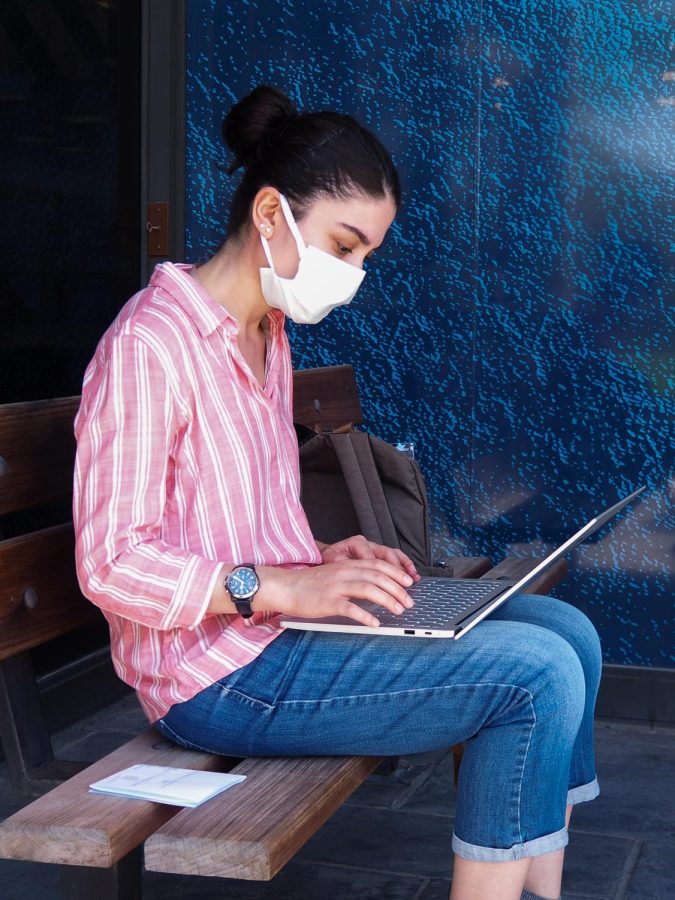Professors Need to Better Utilize Virtual Resources
Courtesy of Olivia Pasquale/Villanovan Photography
Students and professors have been adapting to virtual learning for nearly two years.
February 9, 2022
As a student at Villanova during COVID-19, I have learned to cope with many learning obstacles. I have faced fear of sickness, decreased desire to learn and above all, a lack of normalcy. But an issue I should not fear is the inability to learn and gain access to my classes.
This academic year has allowed students to return to all in-person learning, which is great. However, this has caused issues for students who contract COVID-19, as the lack of Zoom options leave many feeling unprepared upon their return.
During the 2020-2021 academic year, I contracted COVID-19 in late January, which caused me to miss more than a week of my in-person classes. Kuckily I was able to Zoom into every single class I was enrolled in. I came back to campus without the stress of being behind on work and felt ready to attend my classes in-person again.
This academic year, affording students the Zoom option or a fair and equal replacement seems to be less of a priority for faculty. This has caused many students to feel overwhelmed upon their return from quarantine. Personally, I have not encountered any issues regarding COVID-19 Zoom procedures, although I do know several students experiencing difficulties. Amanda Warner, a sophomore who contracted COVID-19 at the start of this semester, spoke about her experience.
“Not having a Zoom option for many of my classes with COVID caused me to fall behind and miss assignments like reading quizzes,” Warner said. “I came back to class confused about all the material because of all the discussion I missed.”
The core of this issue is not due to negligence within the administration. Randy Weinstein and Gabrielle Bauer act as some of the advisors for faculty regarding teaching protocols during the pandemic. With their guidance, the faculty has been given several ideas and options for teaching during this trying time.
When contacted about the current teaching protocols for quarantined students, they both responded with recommended teaching outlines which included options for Zoom, recorded lectures and alternative assignments for those who may have missed work due to quarantine. Although the option for Zoom must be approved by the chair and dean for every class, I am unsure if all professors are working to provide this option, or any other helpful alternative, to their students.
Bauer, who is the Director of the Villanova Institute for Teaching and Learning (VITAL), offers support and guidance regarding COVID-19 to faculty and staff and referred me to an article titled “Teaching students in quarantine/isolation: Options,” which is on the Office of the Provost website.
The recommendations outlined in this article not only encourage teachers to employ multiple options for sick students, but also give them recommendations on how to teach effectively during class time. Resources such as this article are abundant and available to all faculty. It is disheartening to see that these helpful options are being neglected by professors at the expense of students.
Although so many quarantined students are at a disadvantage due to unwillingness from their professors, one of my professors exemplifies what should be done in the current COVID-19 climate. My professor for Religious Tolerance in Medieval Spain, Rebecca Winer, provides several options for quarantined students. First, she always has Zoom running on her iPad and has a student in the classroom continuously check the chat to make sure that students are understanding the class material.
That is not the only option she provides for her students. She also has instituted an option for class participation via a 250-word “response on the assigned reading for credit and to keep up with the work.”
Not only does Winer make sure quarantined students are able to view class, but she also created an option in case they don’t feel well enough to attend. Her initiative and inclusivity is what I expect from the University.
It is unacceptable that so many students feel like they are unable to participate and learn in the classes we pay so much for. The University has worked to provide information and resources regarding COVID-19 learning to all faculty and staff, and I expect these resources to be used.










